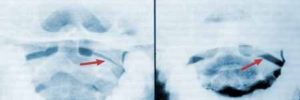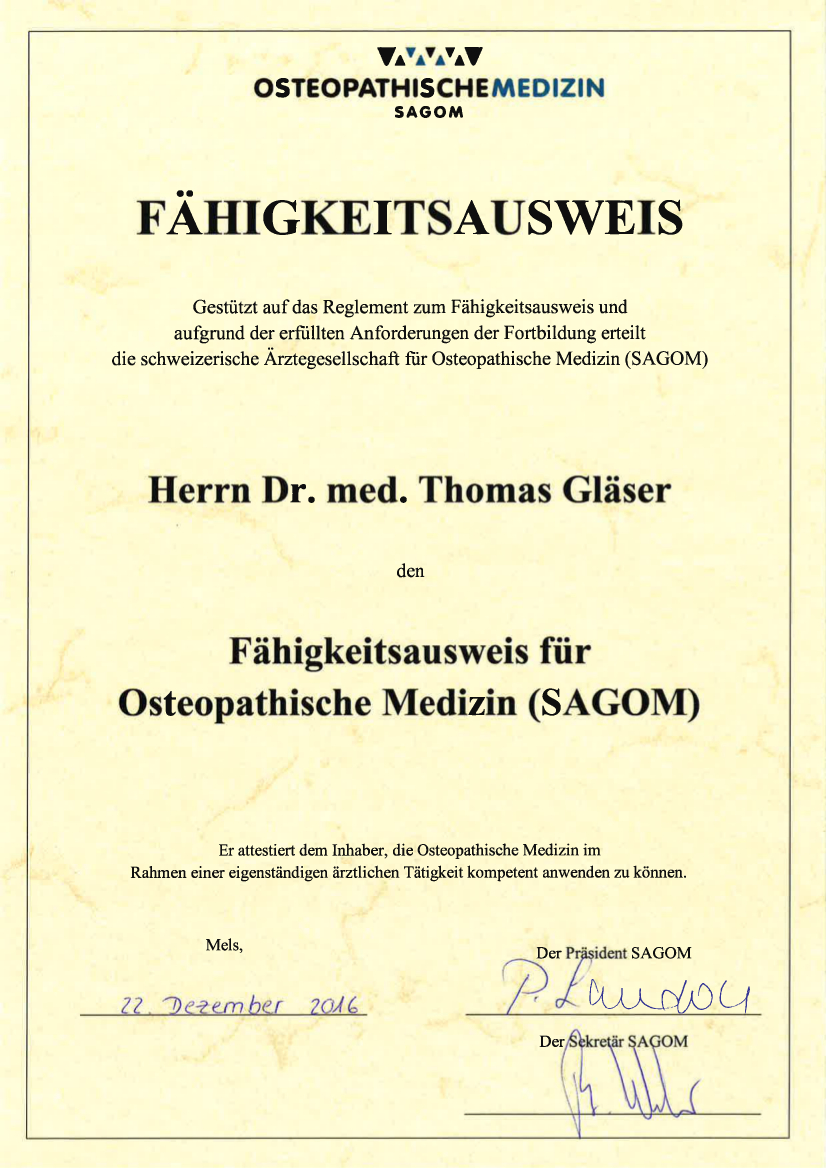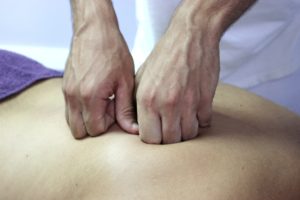Manual medicine and Osteopathy
Qualifications
Certificates of proficiency of the FMH “Manual Medicine (SAMM)” and “Osteopathic Medicine (SAGOM)”
Functional disorders of the locomotor system frequently cause chronic pain syndromes.
Manual medicine
Manual medicine or chirotherapy describes the specific diagnostics and therapy of reversible (not permanent) functional disorders of arms and legs and the mobile parts of the spine.
 The x-rays (cervical spine a.p. through the opened mouth) show an articular dysfunction (blockade) between Atlas and axis (1st and 2nd cervical vertebrae) with the clinical picture of a torticollis (wryneck) before (on the left) and after (on the right) manual medicine with elimination of the articular dysfunction. By using special grip techniques the so-called joint-play is re-established. The “cracking noise” which describes the popular “setting” is only a side effect. With improving articular function the associated pain decreases as a rule.
The x-rays (cervical spine a.p. through the opened mouth) show an articular dysfunction (blockade) between Atlas and axis (1st and 2nd cervical vertebrae) with the clinical picture of a torticollis (wryneck) before (on the left) and after (on the right) manual medicine with elimination of the articular dysfunction. By using special grip techniques the so-called joint-play is re-established. The “cracking noise” which describes the popular “setting” is only a side effect. With improving articular function the associated pain decreases as a rule.
Main techniques of manual medicine are:
- mobilisations
- soft tissue techniques
- manipulations
Osteopathy
- Another effective alternative can be offered by osteopathy or osteopathic medicine (attention: not paid by the KVG!)
Therapeutic methods of osteopathic medicine are
-
-
- muscle energy techniques
- myofascial techniques
- counterstrain-techniques
- functional-technique according to Jones
- visceral technique
- craniosacral technique
-
Contents
Osteopathic medicine comprises a comprehensive manual diagnostics and therapy of malfunctions of the locomotor system, the internal organs and the nerval system. Center of the therapy is not the therapy itself but the individual situation of each patient. By stimulating the self healing forces of each patient the osteopathic physician supports self recovery.
Therapeutic approach
The therapeutic course including the duration of each therapy session depends on the specific findings. Today soft mobilization techniques are preferred, especially when considering the possible side effects like the “Wallenberg-syndrome” caused by a vascular damage of the cervical spine. Used properly and with a correct indication side effects are almost excluded totally. Following manual therapy very often an existing “muscular dysbalance” respectively the missing balance between shortened and overstretched muscle groups has to be treated and eliminated definitely in order to avoid or prevent a new articular dysfunction. Therefore primarily muscle relaxing measures like application of warmth, oral intake (swallowing) of natrium channel blockers and NSAR as well as TENS (electro-physiotherapy) are used.
Therapeutic medical training
Afterwards the specific muscle groups are strengthened by a therapeutic medical training in order to stabilize and guide the joints with the former articular dysfunction. Especially swimming (crawl techniques), aquajogging and water gym can be recommended for this purpose. The buoyancy of the water reduces the strain on the joints to a fraction, so that no overuse takes place. Thus a slowly and gentle muscle formation is possible. Training with like-minded others in a group, first under expert supervision, builds up further motivation. Basic requirements are a swimming pool or a lake. Specific training measures with equipment e.g. in a fitness gym need an individual guidance and supervision by an expert coach in order to prevent overuse injuries of the single combatants often being active there. Basic principle is : „less often is more“.





